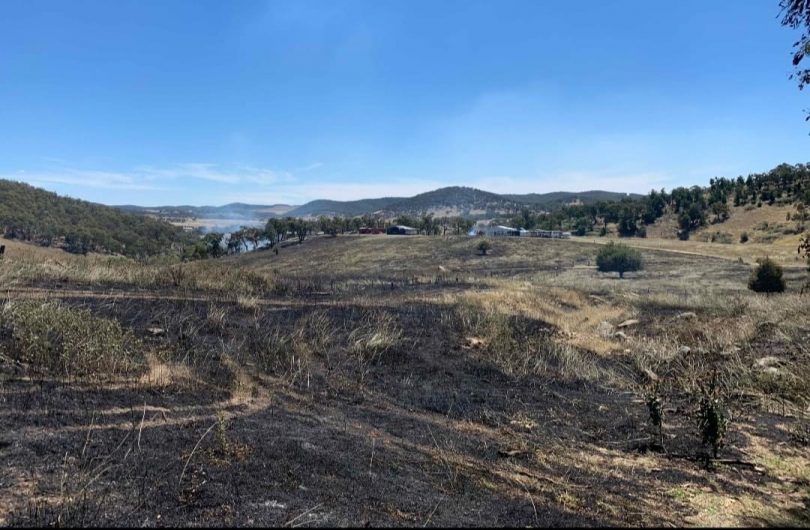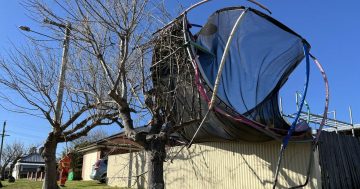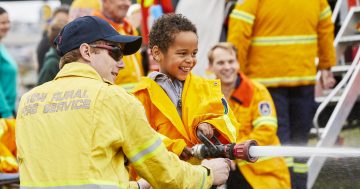
Crews from the NSW Rural Fire Service refill at a dam while fighting the Chatsbury fire. Photo: Goulburn Mulwaree Support Rural Fire Brigade.
A fast-moving grass fire that burnt 52-hectares on Robbs Lane in Chatsbury near Goulburn on Monday afternoon has served as a reminder that large parts of regional NSW should remain on high alert for grass and crop fires, particularly as the mercury rises.
Buildings were under threat when the fire broke out at 12:00 pm yesterday (11 January), but brigades from the NSW Rural Fire Service were able to protect the property and contain the fire by 4:20 pm.
According to Krystaal Hinds from the Yass Fire Control Centre, the fire was started by an angle grinder.
Ms Hinds said property owners “should be sensible” when using machinery as temperatures soar to 35 degrees Celcius this week and they should also “have water available” in case a fire breaks out.
While the fire was contained on Monday, crews from the NSW RFS returned to the property today to ensure the fire had been completely extinguished.

The fire burnt 52 hectares, which is around 130 acres. Photo: Goulburn Mulwaree Support Rural Fire Brigade.
Light winds helped the firefighters contain the fire, but high grass in the paddocks meant the fire moved more quickly than anticipated, Ms Hinds said.
This is the largest fire the Southern Tablelands has seen this summer, which is positive considering last fire season.
However, Ms Hinds urged people not to become complacent after the recent rain and cooler start to the summer.
“Please be vigilant while using hot works in paddocks,” Ms Hinds said.
Experts previously warned that people living in the Southern and Central Tablelands should be on high alert for grass and crop fires this summer.
The Bushfire & Natural Hazards Cooperative Research Centre’s (BNHCRC) November bushfire outlook predicted above-normal fire conditions for large parts of NSW, particularly west of the Great Dividing Range.

Smoke from the Chatsbury fire. Photo: Goulburn Mulwaree Support Rural Fire Brigade.
Significant rainfall throughout winter and spring in NSW resulted in prolific grass growth, which we can now see across the south-east. In addition, many farmers were forced to sell stock during the drought, which means there is more fuel around with fewer pastures and crops under grazing.
The Bureau of Meteorology has predicted that the temperature will remain around the high 20s and low 30s in the Southern Tablelands until 22 January.
As a result, the fire danger rating for the Southern Tablelands is high.
















